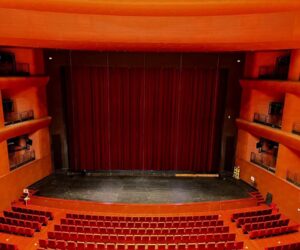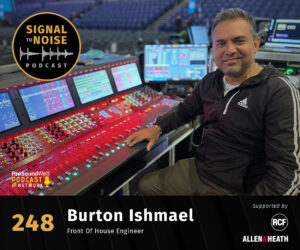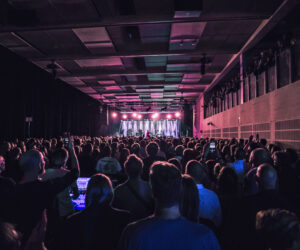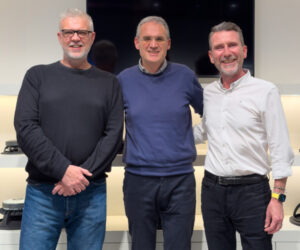Vive Latino is Mexico’s biggest music festival. It is a three-day event that usually features 100 bands on multiple stages at Foro Sol, a large stadium in Mexico City.
This year’s festival lineup included a wide range of talent, including Café Tacuba, Molotov, ZOÉ, Foster the People, and Fatboy Slim. To ensure flawless audio, this year’s festival relied heavily on the latest Shure wireless systems, including the new Axient Wireless Microphone System and the PSM 1000 and PSM 900 personal monitoring systems.
Handling frequency coordination for Vive Latino was Ruben Alvarez, support and service manager for Representaciones de Audio.
“The festival is a lot like Coachella or Lollapalooza in the U.S.,” notes Alvarez. “It is three days of music on three stages, and we are on site for a full week of preparation, including set-up, sound checks, and, of course, frequency coordination.
“A lot of bands bring in their own equipment, and TV stations send reporters with their own wireless gear, so there is always the possibility of frequency conflicts. That is why we brought in Axient this year.”
Axient offers a range of features designed to detect and avoid wireless interference. Frequency diversity enables two independent frequencies to transmit simultaneously; while interference detection circuitry provides the unique ability to switch seamlessly to the backup channel should the signal be compromised.
Axient’s backchannel communications system, ShowLink, enables full remote control of every major transmitter function while providing precise battery condition reports.
“Axient is amazing. We used eight channels, with SM58 and KSM9 handhelds, plus bodypack systems for guitars, saxophone, and accordion, always in full automatic mode,” says Alvarez. “We also used Spectrum Manager and the Wireless Workbench software to coordinate with all the other wireless.
“This was my first time using Axient at a major event, and everything worked perfectly. We had no audio or RF problems, no complaints from any artists or engineers. It made my job easy.”
Alvarez was impressed with the performance of the Axient Interference Avoidance technology.
“When the receiver detects interference, the automatic mode deploys a secondary new frequency before any problem can be heard,” he says. “The frequency change makes no noise at all, so even the vocalist using the mic cannot hear the change. It’s like having a backup system inside the system, but totally automatic. This was amazing to all the engineers who had never seen it before.”
Things went equally well on the monitor side, with virtually every artist on the main stage using the PSM 900 (16 channels) or PSM 1000 (4 channels). Both offer exceptional sound quality, with the PSM 1000 adding diversity reception to virtually eliminate dropouts.
“Almost every major artist uses in-ear systems today, so having a reliable system for Vive Latino was very important,” says Alvarez. “In past years, we have used another brand, but we brought in the PSM 900 and PSM 1000 this year. It was a great opportunity to show all these musicians and engineers how great these new systems are.”
The sound quality and solid wireless performance of the Shure systems were easily demonstrated during rehearsals and set-up.
“For most artists, they trust their monitor engineer to choose the best wireless system, so we showed them the system and let them listen to the sound,” says Alvarez. “With the new PSM systems, that is all that is required. I think we created a lot of new customers for Shure PSM during the festival.”
Overall, the typical wireless channel count during Vive Latino was about 75. Along with 8 channels of Axient, 20 channels of Shure UHF-R were in constant use, along with four channels of ULX Series and one ULX-D system for guitars. The production also handled a range of artist-supplied wireless systems, while also coordinating wireless intercoms and RF systems used by the media reporting on the festival.
“It was a big challenge, because things are always changing,” says Alvarez. “I used Shure Wireless Workbench software for most of the coordination, and I also use WinRadio as a tool.
“But the biggest tool is communication, to know their needs and preferences of every band, every engineer, and even the reporters. When I have a list of frequencies from my Shure software ready, there is no argument, because it helps everyone do their job.”
Reflecting back on his experience at Vive Latino, Alvarez credits Shure wireless with making his week at Vive Latino a rewarding one. “To coordinate wireless at the most important music event in Mexico was very special to me,” he concludes. “Shure wireless made my job very easy, especially the Axient systems. It was one of the best experiences of my professional life.”




















